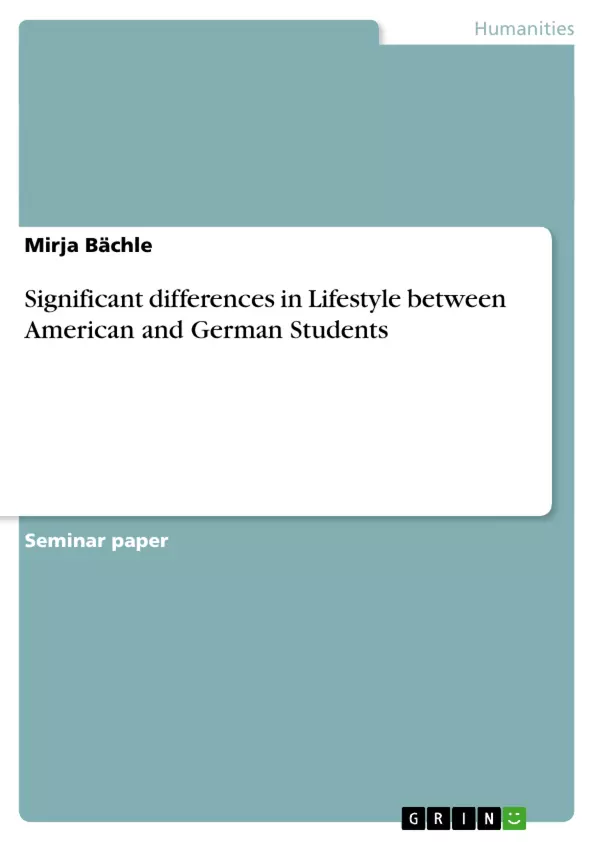Everybody, who has ever been confronted with typical American students, whether it
was in real life or on television can tell, that there is something special about them.
Somewhere along the way, American college life even attained cult status with movies
and books about “the college experience”, like “The Animal House” or “American Pie
2” etc., which are popular all over the world.
A student lifestyle, no matter where it is, consists of an assortment of expectations,
rules, traditions, relationships and communicative strategies employed by prior
education and fellow culture members. The average student is in his early twenties, has
not left parents’ home for too long and is basically adapting to a new life. This new
phase is filled with the ambition to learn as much as possible to enlarge his personal
sphere of knowledge in order to ensure a high future earning potential, whilst never
forgetting the “fun factor”, which is also characteristic for a typical student.
Although students all over the world have these similar lifestyles in common, there are
also significant differences. The author, who herself is a student too, wants to identify
and explain major between the American and German student lifestyles.
Inhaltsverzeichnis (Table of Contents)
- Introduction
- Higher education
- Structure
- Tuition
- Schedule
- Supervision
- Lifestyle
- Time & Money
- Eating habits
- Drinking habits
- Sports
- Volunteering
- Conclusion
- Sources
Zielsetzung und Themenschwerpunkte (Objectives and Key Themes)
This paper aims to identify and explain significant differences between the American and German student lifestyles. The author, a student herself, explores key aspects of student life, comparing and contrasting the two cultural contexts.
- Higher education systems and structures in the United States and Germany
- Tuition fees and financial implications for students in both countries
- Time management and study schedules in American and German universities
- Cultural influences on student lifestyles and behavior
- The impact of cultural norms on student experiences and perceptions.
Zusammenfassung der Kapitel (Chapter Summaries)
- Introduction: The introduction establishes the context for the paper, highlighting the distinct characteristics of American student life and the need to analyze the differences between American and German student lifestyles. It emphasizes the shared and unique aspects of the student experience across cultures.
- Higher Education: This chapter delves into the contrasting structures of higher education in the United States and Germany. It examines the decentralized, competitive system in the U.S. with its focus on private institutions and tuition fees, contrasting it with the centralized, government-funded, and more egalitarian system in Germany. The chapter also explores the differences in tuition costs and financial aid availability.
- Structure: This subsection focuses on the organizational structures of higher education in the U.S. and Germany. It explores the role of private and public institutions, governance models, and the increasing trend of privatization in the U.S. in contrast to the more centralized and homogenous system in Germany.
- Tuition: This subsection examines the financial burden of higher education for students in both countries. It highlights the high tuition fees in the U.S. and the impact of financial constraints on access to higher education. The chapter compares this to the free tuition system in Germany, emphasizing the different financial realities for students.
- Schedule: This subsection delves into the differences in academic schedules and time management strategies employed by students in the U.S. and Germany. It discusses the trimester system in the U.S., emphasizing the constant pressure and demanding schedule, in contrast to the semester system in Germany, where students generally have more flexibility and leisure time.
Schlüsselwörter (Keywords)
Key terms and concepts explored in this paper include: higher education systems, tuition fees, student lifestyles, cultural influences, time management, academic structures, American students, German students, comparative analysis, and intercultural differences. The paper focuses on the impact of cultural norms and educational practices on student experiences and perceptions.
- Quote paper
- Mirja Bächle (Author), 2003, Significant differences in Lifestyle between American and German Students, Munich, GRIN Verlag, https://www.grin.com/document/15314



